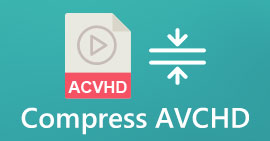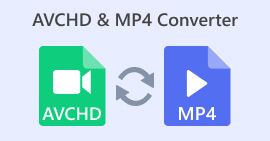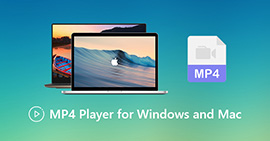What is AVCHD vs. MP4: Everything You Need to Know
Have trouble deciding which one to choose between AVCHD and MP4 for filming or encoding? This is why this post was written: to explain AVCHD vs. MP4. Also, the key differences, pros and cons, and the conversion between these formats are added to help you decide which best suits you. We will also cover file extensions and codecs and how compatible they are with different devices. All of those will be explained as you read the entire content below.

Part 1. AVCHD vs. MP4
What is AVCHD
The Advanced Video Codec High Definition, or, in simpler terms, AVCHD, is a special way of storing high-quality videos on camcorders, hard drives, DVDs, and even flash drives. This file type was created by Panasonic and Sony specifically for camcorders and was even improved in 2011 with version 2.0. An AVCHD file is like a container that can hold and store videos in different resolutions, such as clear 1080p, as well as sound, menus for navigating the video, slideshows, and even subtitles.
Pros
- It comes with high image quality.
- It supports high-quality videos, even 3D.
- It is highly compatible with Blu-ray disc formats.
Cons
- It has a larger file size compared to MP4, even with the same video quality.
- The video may be split into multiple files due to the size.
- It’s a pain to open AVCHD files on Macs.
What is MP4
On the other hand, MP4, which stands for MPEG-4 Part 14, is a common file format used to store videos and audio on computers. It was first introduced in 2001 and can also sometimes include subtitles and pictures. Unlike AVCHD, MP4 allows for different compression methods, such as zip, to be used depending on the content, which makes the files smaller. This also means MP4 can easily combine regular videos and animations since it can fit a lot more data than other formats like AVCHD.
Pros
- It is the universal video format that is available on various platforms.
- It can contain video, audio, and other data within a compact size.
- High compression in good quality.
Cons
- It may lose information after compression.
- Security-wise, MP4 files can be easily distributed.
Differences Between AVCHD and MP4
AVCHD and MP4 might both be used for videos, but they're different tools for different jobs. Such differences will be seen by reading the details below.
File Extension:
MP4 files always have the same extension, which is just plain old .mp4, no matter where you find them. AVCHD, on the other hand, is a bit trickier. AVCHD files recorded on a camcorder typically use the .mts extension. However, when you transfer those same AVCHD files to your computer, they might suddenly show up with a different extension, which is normally .m2ts instead. Thus, the extension of AVCHD can change depending on where you see the file.
File Codecs:
Both video files are storage containers for videos and sound. However, they use slightly different methods to pack things in. For audio, MP4 uses a system called MPEG-4 AAC, which is similar to a popular music format. On the other hand, AVCHD goes with AC-3, also known as Dolby Digital, which is commonly used in home theaters. When it comes to just sound storage, there's no real difference between MP4 and AVCHD. Even though they use different methods, the sound quality generally comes out pretty similar between the two.
File Compatibility:
When it comes to compatibility, MP4 is like a superstar compared to AVCHD. It works on tons of devices, from phones and computers to tablets and TVs, which is why it's the go-to format for streaming services. AVCHD, on the other hand, is more specific to Blu-ray discs and certain camcorders, while MP4 is pretty much a universal format that almost everyone can understand. You can easily burn your AVCHD videos directly onto these discs for high-quality playback.
Part 2. AVCHD or MP4: Which is the One to Choose
When you come down to deciding between AVCHD and MP4, always consider what you care about most. If you want the best video quality and compatibility with Blu-ray, AVCHD is the best to pick. But keep in mind that AVCHD files have more space and might not play nice with all your gadgets. On the flip side, MP4 still delivers decent quality, although not as tip-top as AVCHD. Also, if you prefer smaller file sizes, hassle-free sharing, and compatibility across various devices, then MP4 is the way to go.
Part 3. How to Convert AVCHD to MP4 or Vice Versa Using Online Converter
In line with choosing between AVCHD and MP4, we never deny the challenge that it brings. Therefore, if you cannot decide on this selection, then we recommend you interchange them via conversion. Don’t worry because the solution that you can use won’t require you to install software. As long as you use FVC Free Video Converter Online, then you and your files are good to go.
Moreover, this online tool has a user-friendly interface that makes converting videos a breeze in just three steps. No matter what kind of video or audio file you have, the FVC Free Video Converter can handle it, including popular formats like MP4, FLV, AVI, and MKV. It also promises a safe and secure conversion process, so you can be sure your videos won't be corrupted or lose any data during the process. Plus, you don't have to worry about any annoying watermarks being added to your videos after conversion.
Step 1. The first thing you should do is visit FVC's official website. Once you are there, click the Add Files to Convert button to upload your video file.
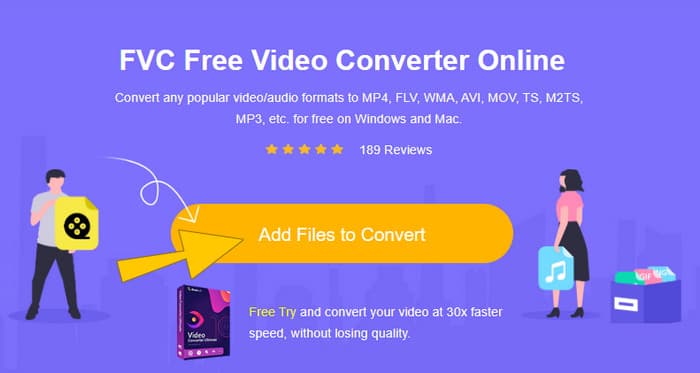
Step 2. Then, when the AVCHD videos are loaded, toggle the MP4 among the format selections at the bottom.
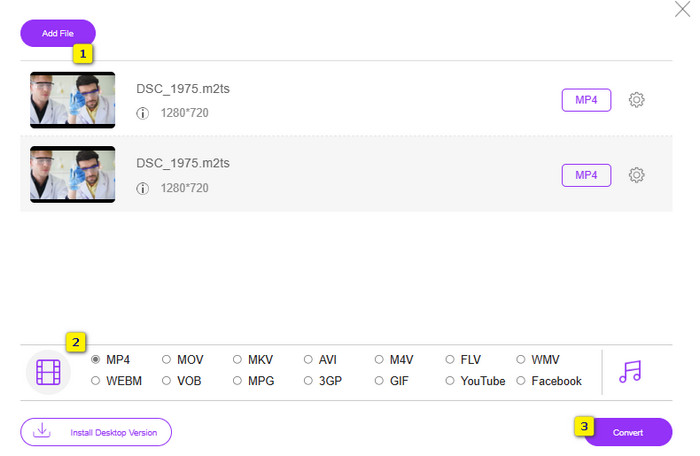
Step 3. Once done, click the Convert button and select a file path for the output, and then the process will begin instantly.
Part 4. FAQs about AVCHD and MP4
Which AVCHD or MP4 has better video quality?
Between AVCHD and MP4, which is more widely compatible?
When should I use AVCHD?
Conclusion
For those who are stuck on AVCHD vs. MP4, This guide breaks it down simply. As these are two different video formats, each comes with its own strengths. MP4 is like a space saver, perfect for sharing and storing because the files are smaller. On the other hand, AVCHD is the king of quality, ideal for high-resolution videos, especially if you plan to burn them onto Blu-ray discs.



 Video Converter Ultimate
Video Converter Ultimate Screen Recorder
Screen Recorder